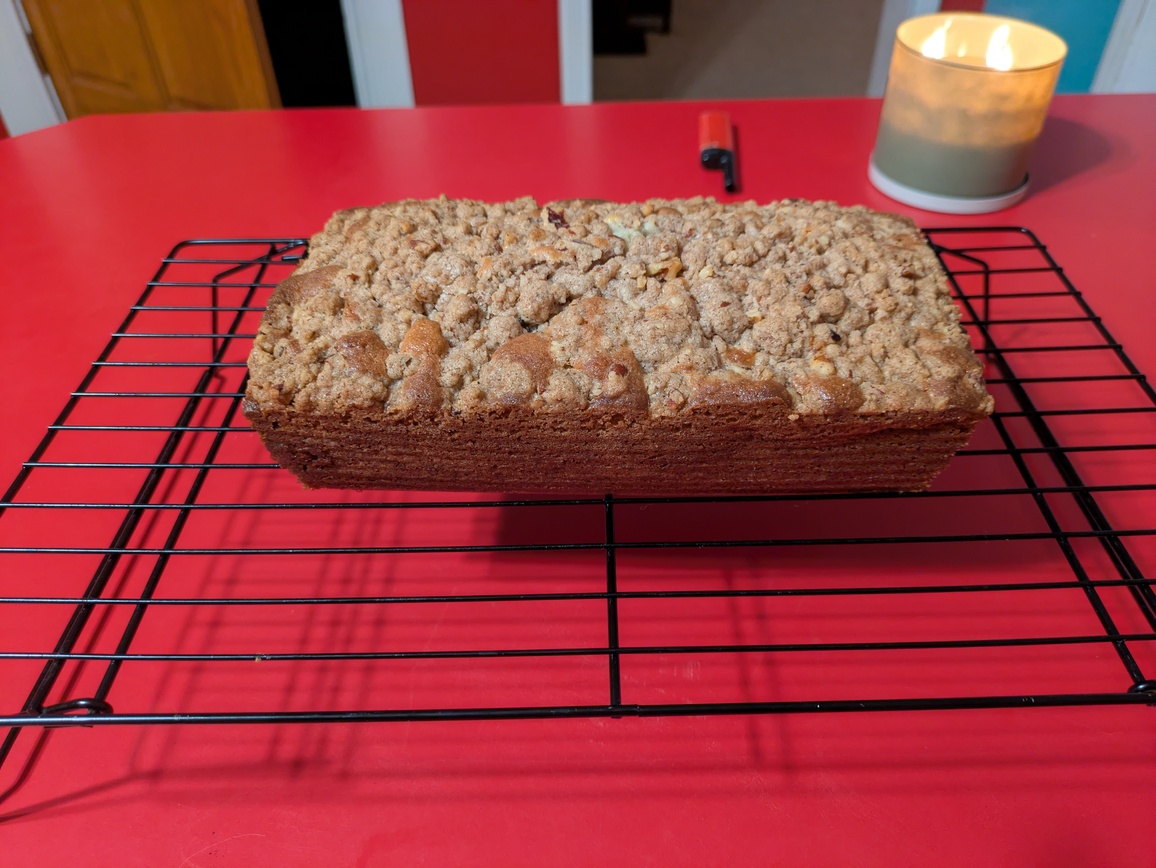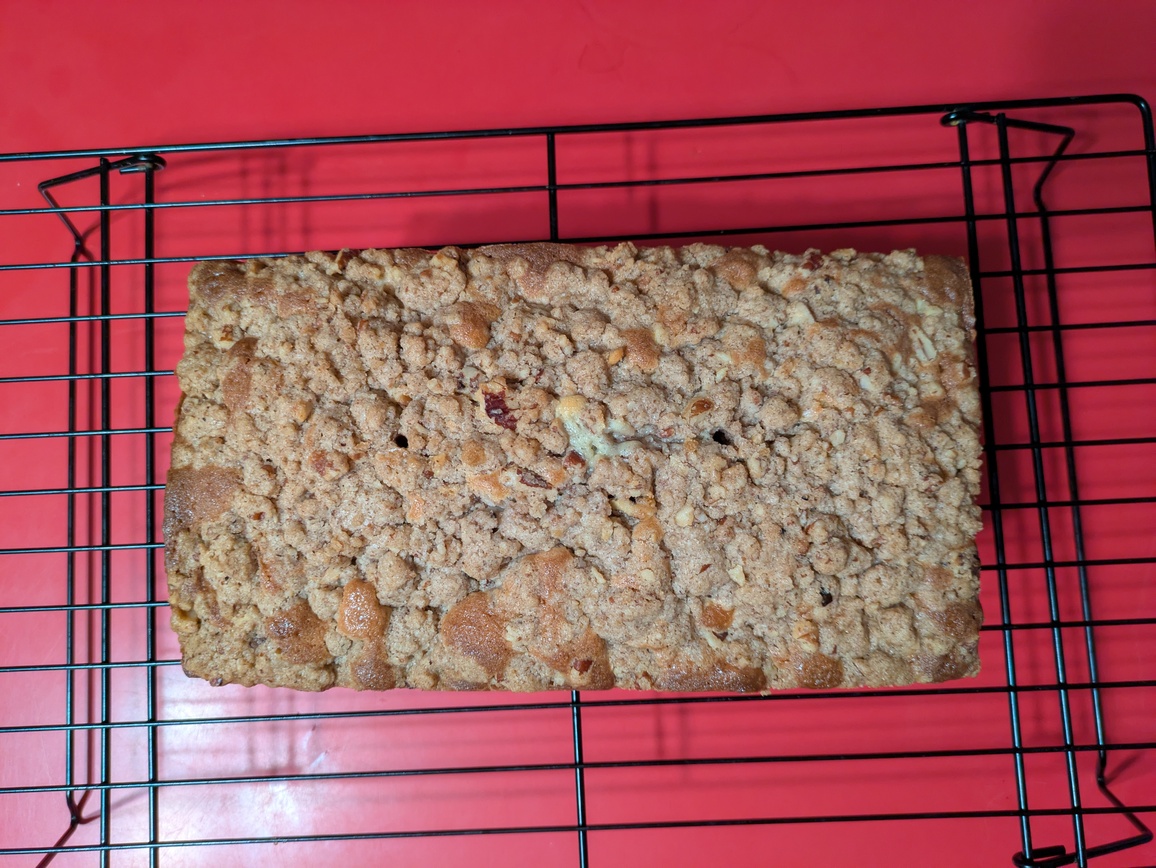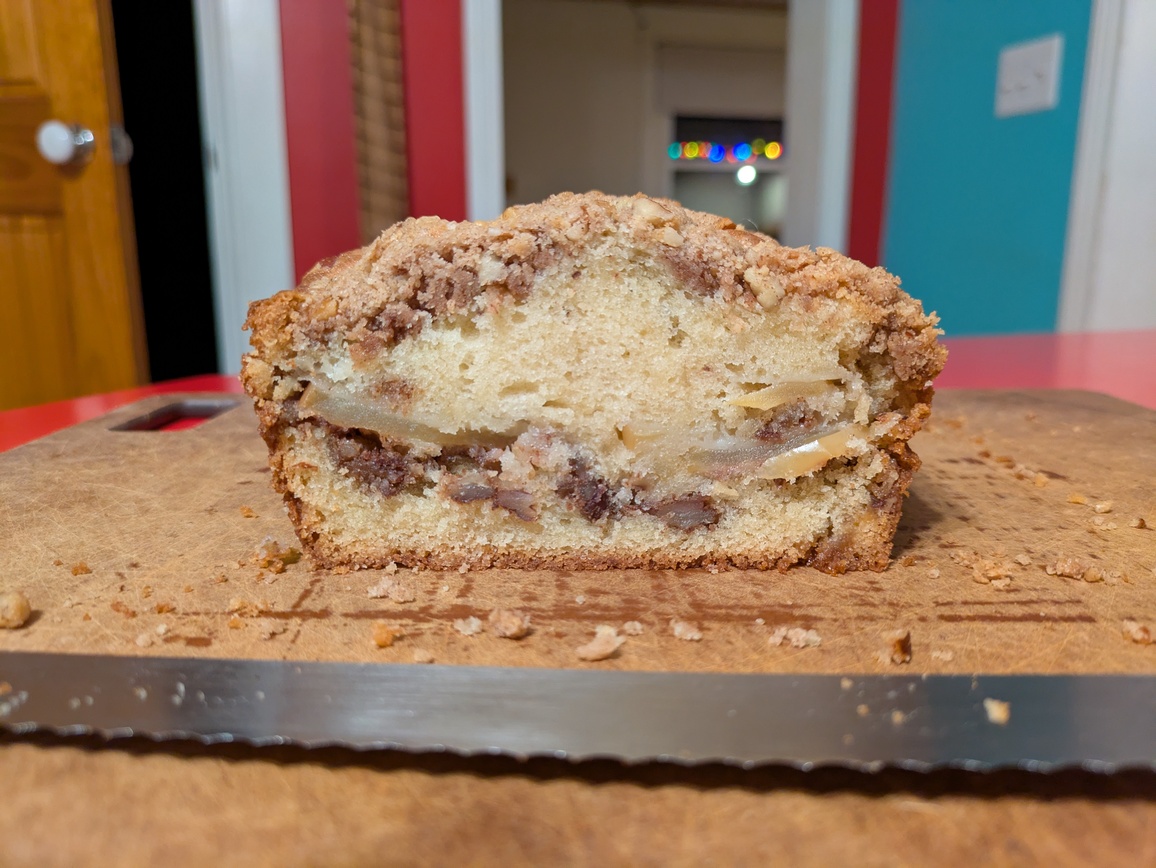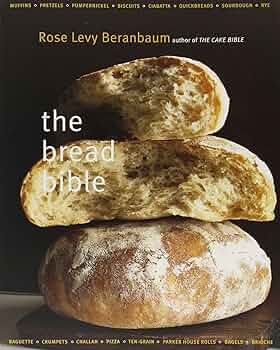Baking the Bread Bible #1: Cinnamon Crumb Surprise
Some time ago, I thought to myself: Wouldn’t it be fun to bake through Rose Levy Berenbaum’s entire Bread Bible from start to finish?
I could blog about it, too, I thought, on that blog I keep saying I’ll start.
And I imagined all the possibilities: I could bake every recipe in the book in the order they appear, including variations, from start to finish; I could bounce between its six main sections (Quick Breads…, Flatbreads, Soft Sandwich Loaves and Dinner Rolls, Hearth Breads, Sourdough, and the Brioche Family); I could bust out a random number generator and let chance take its course.
And it could be my little way of bringing back a bit of the old food web, I dreamt to myself. No, not that kind of food web… early food blogs and the like, before a combination of SEO and social media and other nefarious forces swept through and left them largely soulless and dreary.
That’s a bit melodramatic, I chided myself, but I understood me, knew where I was coming from, and so didn’t tsk tsk too heavily.
But something always got in the way of this epic project - over- and underthinking frequently undermine my most genius plans - and it was left languishing…
Until now. Today, I did it. I started Baking the Bread Bible with little forethought and equally few photos with which to capture the occasion. But I baked the first recipe in the book - “Cinnamon Crumb Surprise,” p. 97 - and I’m putting my flag in this bake as the first step toward baking the whole damn book.
I explain what I’m doing and why below. But first, the bread:



Surprise! The surprise of the Cinnamon Crumble Surprise is, in fact, apple.
I hadn’t made this recipe before and I’m very pleased. This eats with almost cake-like qualities. Great flavor coming mainly from the apple slices, some cinnamon, and some vanilla, and the crumble topping - sugar, nuts, and a bit of flour and butter - is also part of the filling. I made this pretty true to the recipe, except for subbing pecans for some of the walnuts, and I tossed the apples in orange juice rather than lemon.
Some baking notes:
- I might try baking this a pan size down. The recipe calls for a 9 x 5 but says it bakes an 8 x 4 x 3 loaf, which doesn’t seem right. My loaf came out slightly shorter than that (about 2.5 in at the center).
- I had to bake mine a bit longer than the max time of 60 minutes it gave. The first check, at around 55, came out with some pretty wet batter on the tester. In the end, it was in for 70, maybe 75, with foil tenting from the 45 minute mark onward.
- This crust is fantastic. I like a darker crust on quick breads like these, and this is right up to the line on doneness.
I feel like it could use just a touch more structure: the center just the tinest bit dense/claggy in appearance. I didn’t weigh my eggs, and my butter could probably have been a bit softer, so those might be good tweaks to focus on in the future. Both could affect that structure.
But honestly, this was an excellent quick bread. We are holding back additional slices because there’s 12 tbsp of butter in this baby, but my guess is it will be eaten far more quickly than it should. Great way to kick off this project and something I’ll almost certainly make again.
Why bake this book? What will this entail?

RLB’s Bread Bible was one of the first bread books I got, back when I still romanticized kneading by hand and knew literally nothing about bread baking. We (my then partner, now wife) baked a few items from it, but the methods for hearth breads - the stuff I was most interested in - were kind of tedious and tiring, the recipes seemed overly complicated, and I put it away for a while.
And then it started creeping into my rotation, especially as I learned a bit more about bread and baking. Its extra steps no longer seemed so extra. I made peace with a stand mixer - that happened pretty quickly, actually - and I realized that much of what seemed tedious really paid off. The bread I produced from it got better and better. And although I’ve since gone on to bake from a decent number of books, I still reach very regularly for The Bread Bible for any number of recipes.
What makes this a challenge, I think, is that RLB includes variations for the vast majority of the recipes she’s included here, and she often includes a number of possible choices in technique. Take her “Basic Hearth Bread,” which I’ve made dozens of times. It includes a “Slightly Sour Artisan Loaf” variation, a “Velvety Buckwheat Bread” variation, and an “Ultimate Full Flavor Variation.” Whereas the first two are about different ingredients that substantially change the flavor and require some shifts in instructions, the last variation concerns the time spent fermenting the sponge as well as its final fermentation/proofing time.
These possibilities are, I think, what I found daunting early on, and what probably keep the book from being a good rec for a beginner. But they are also what I find rather charming about the book: RLB is very opinionated in many ways, yet she lays out these choose-your-own-adventure twists in just about every recipe that are really endearing.
I’m not going to try and bake every variation… at least, not every variation of technique, for every type of bread. But I’ll try to hit the main variations, and to learn from some of thee options she gives, in terms of technique, through trial and error over time.
I don’t have a master plan as to how I’ll often scratch one of these off the list, or how I’ll work through the book. Cover to cover isn’t right, as it would take 24 bakes just to get through the main recipes of the first section — I’m assuming about double that to get through all the variations! So I’ll be bouncing around somehow… maybe a strategy will develop over time.
No timeline, no pressure, just a lot of baking with a book that’s become something of a friend. Looking forward to the next bake already.